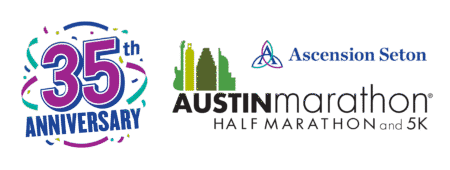Ascension Seton Austin Marathon Continues HotelPlanner Partnership for 2026
Delivering Seamless Lodging Solutions for a World-Class Race Weekend in Austin
The Ascension Seton Austin Marathon, Half Marathon, & 5K is excited to announce the continuation of its partnership with HotelPlanner, a leading travel technology company specializing in customized hotel booking solutions. As the Official Hotel Provider for the 2026 event, HotelPlanner will once again offer participants and guests access to exclusive lodging options tailored to the Austin Marathon race weekend, scheduled for February 15, 2026.
This ongoing partnership ensures runners, spectators, volunteers, and staff can effortlessly plan their stay through HotelPlanner’s user-friendly booking platform. Whether seeking group accommodations, flexible booking terms, or budget-conscious choices near the course, HotelPlanner makes travel planning simple and stress-free.
“We’re thrilled to continue working with HotelPlanner for another year,” said Eleanor Stein, Sales and Junior Partnership Manager of the Austin Marathon. “Their wide network of hotels and flexible options make it easy for our participants to stay close to the start and finish lines, and enjoy all that Austin has to offer during this unforgettable weekend.”
The Austin Marathon weekend kicks off with the two-day Health and Fitness Expo, taking place February 13–14, followed by the race on Sunday, February 15, 2026. Through HotelPlanner, visitors will be able to book accommodations throughout the entire event, all in locations that showcase Austin’s energy and hospitality. Runners and spectators are encouraged to visit the Austin Marathon HotelPlanner Page HERE to explore lodging options and prepare for an exciting race weekend in Austin.
The Austin Marathon course weaves through some of the city’s most iconic neighborhoods and finishes at the steps of the Texas State Capitol. The race is renowned for its live music, crowd support, and Finish Line Festival, complete with a beer garden, food trucks, photo ops, and a recovery zone—making it more than just a race, but a true Austin experience. Registration for all distances is open at www.youraustinmarathon.com.
About the Ascension Seton Austin Marathon®: Since its inception in 1992, the Austin Marathon® has emerged as a world-class running event, attracting participants from all 50 states and over 50 countries. With a course that spans every quadrant of this dynamic city, offering a festive atmosphere with live music throughout, the marathon culminates in a vibrant finisher party. The event also serves as a powerful force for good, raising hundreds of thousands of dollars annually for various non-profit organizations. The Austin Marathon elevates Presidents Day weekend into a grand showcase of athleticism and community spirit, making it a bucket-list event for athletes, enthusiasts, and supporters from all over the world.
About HotelPlanner: HotelPlanner, a leading travel technology company that combines proprietary artificial intelligence agents (HotelPlanner.ai) and a 24/7 global gig-based reservations and customer service network. The HotelPlanner platform provides comprehensive hotel booking services to individuals and groups worldwide. With a vast network of hotels and a user-friendly interface, Hotel Planner makes it easy to find and book the perfect accommodations for any type of travel.





 Cream
Cream setting, or simply celebrating a day well-spent.
setting, or simply celebrating a day well-spent.

